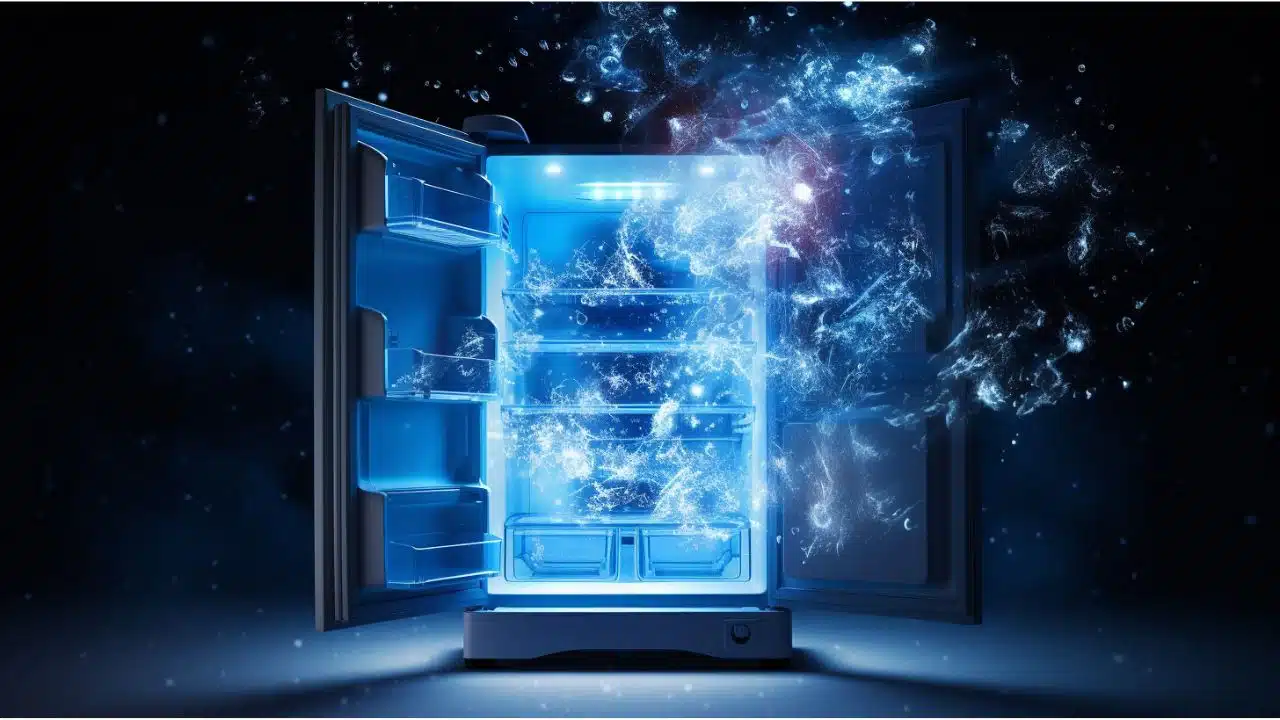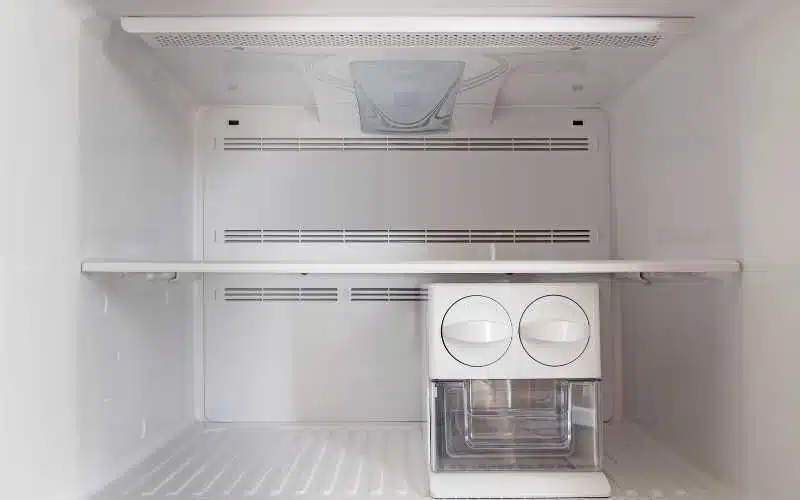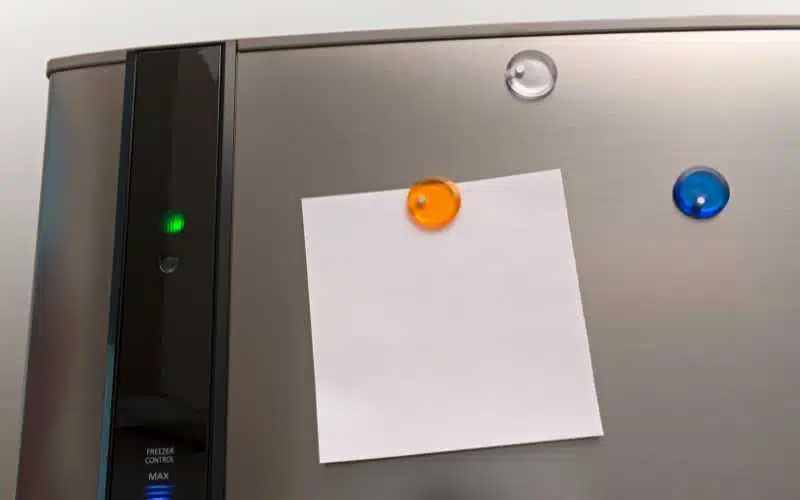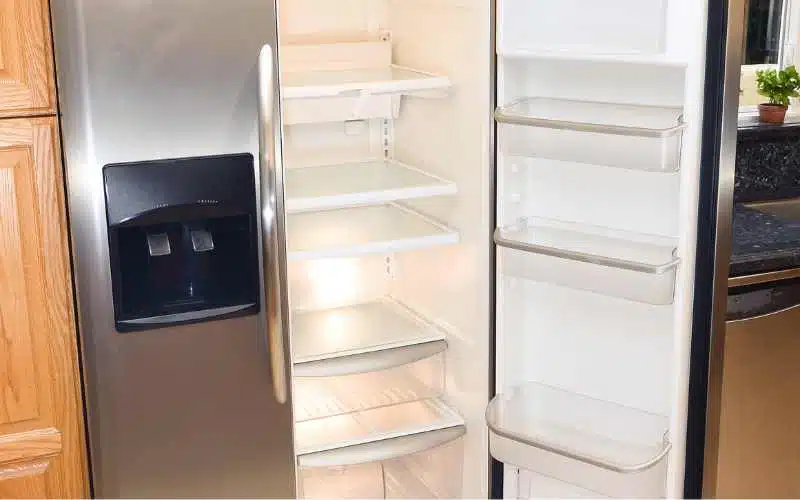The Samsung ice maker is a great addition to any home. It provides you with ice whenever you need it. However, sometimes the machine freezes up and will not produce any ice.
In this article, we’ll discuss why your Samsung ice maker keeps freezing up and what you can do to fix it.
On normal grounds, your Samsung Ice machine will freeze due to warm air penetration through openings around the system. Consequently, the warm moisture will condense and solidify into ice in delicate areas. Notwithstanding, clogged condenser coils bring about extreme cooling scenarios, which can also freeze the ice maker.
Why Does My Samsung Ice Maker Keep Freezing Up?
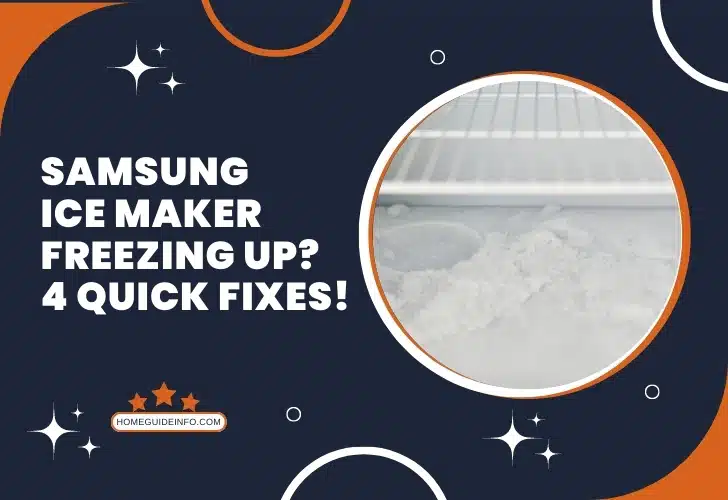
There are various reasons why your Samsung Ice machine will freeze up.
Some include warm air penetration from the fresh food compartment, clogged condenser coils, a clogged or broken ice chute, and an impaired ice bucket.
#1. Warm Air Penetration from the Fresh Food Compartment
As you already know, your Samsung fridge ice machine is normally situated around the fresh food chamber.
But even then, the ice maker temperature is normally low compared to the chamber. And this temperature modulation is so that it can easily solidify water into ice.
The only issue is that the fresh food compartment isn’t guaranteed 100% impermeable to air.
By implication, warm air escaping from the compartment into the ice maker is possible and sometimes occurs.
Consequently, condensation will surface, and an accumulation of frost will cover the entire ice maker.
The temperature in the ice machine is cooler; thus, when it combines with less cool air from the compartment, freezing will occur.
In such scenarios, you’ll have to melt the ice and cover the openings around the ice maker. You can utilize silicone adhesives.
#2. Clogged Condenser Coils
The condenser coils play a very crucial role in your refrigerator cooling framework.
Specifically, they function in removing hot air from the system. So if they’re clogged, the warm air won’t be able to escape efficiently.
The cooling system will consequently need to work harder to keep cool; that’s where excessive cooling comes in. This extreme cooling scenario will cause the ice machine to freeze up.
#3. A Clogged or Broken Ice Chute
To your knowledge, anytime you request ice from your refrigerator, it normally passes through the ice chute.
So if the ice chute isn’t closed properly after dispensing the ice, warm air can expect into the ice machine and cause freezing.
But apart from the chute not being properly closed, cracks around the ice chute channel can grant easy access to the surrounding warm air.
Note that the surrounding air may not necessarily be warm, but compared to the temperature in the ice machine, it’s less cool.
#4. An Impaired Ice Bucket
The production of ice is a continuous process and goes on and on. Thus anytime your ice machine finishes a batch of ice production, the ice goes straight into the ice bucket.
The ice bucket serves as a preservation facility. So if the bucket has cracks or openings, warm air can escape to the ice maker and again cause freezing.
Four Quick Ways to Stop Samsung Ice Maker from Freezing
If you find yourself in any ice maker freezing situation, try out the following to put an end to the freezing.
- Ensure that the condenser coils aren’t Clogged
- Examine the ice maker for cracks and openings
- Inspect the ice bucket and its seal
- Check the water supply line and make sure it’s not frozen
#1. Ensure that the Condenser Coils Aren’t Clogged
Since clogged coils are one factor that can lead to a freezing ice machine, inspect them and ensure they aren’t Clogged.
If you find any debris, utilize a brush and a dry fabric to eliminate the dirt. Ensuring debris-free coils provide an efficient cooling system.
#2. Examine the Ice Maker for Cracks and Openings
Another thing you can do to stop the freezing in your ice machine is to examine the system and cover any openings or cracks. Covering up the openings will stop the infiltration of warm air.
#3. Inspect The Ice Bucket and Its Seal
If your ice bucket has cracks and openings, warm air will easily enter the ice maker. Thus check and ensure that they’re both in good condition.
#4. Check The Water Supply Line and Make Sure It’s Not Frozen
Most users are quite unaware, but the ice maker will freeze if your fridge water supply line is frozen.
The reason is that there will be no water supply while the ice machine runs; consequently, the whole area will freeze.
How Do I Force Defrost My Samsung Ice Maker?
Unfortunately, most Samsung ice makers face issues like ice build-up due to poor designs. But the situation can now be managed, thanks to the force defrost alternative.
To defrost your Samsung ice maker, put the refrigerator in test mode and force it to run a defrost cycle.
Specifically, push the freezer and lighting knobs for about 9-12 seconds; the display should go bank.
Afterward, press the lighting knob to navigate to the force defrost mode- press the knob continuously until ‘Fd’ appears.
Following a couple of moments past, the refrigerator will respond with a continuous loud beep. The defrost mode typically triggers the defrost heaters in the refrigerator evaporator system.
Note that the force defrost mode will continue to run until you switch off the fridge or its current mode. Likewise, the defrost cycle activation knobs vary depending on the model.
For instance, instead of using the freezer and lighting knobs on some models, it’s ideal to use the power cool and freeze knobs.
Additionally, alternatively, to the force defrost, you can defrost the ice maker manually. But, first, remove all the food from the freezer and fridge.
Then, kindly turn off the power to your appliance at the circuit breaker box or unplug it. Afterward, allow the fridge to sit for 48 hours or more, depending on the ice build-up level.
After waiting, plug in or turn on your refrigerator; use a dry microfiber cloth to clean off any residual moisture. Note that the fridge door is to be left open while the frost melts.
How Do You Turn on the Ice Maker on a Samsung Refrigerator?
Switching on your Samsung ice maker is a straightforward process. Before you begin, push the door alarm knob for about three seconds to unlock the panel if it’s locked.
Afterward, search out the ice maker power knob on the panel and activate it. Subsequently, unseal the inlet valve so water flows easily to the ice machine.
As a guide, ensure that the water lines aren’t clogged, or else you’ll have issues with the ice maker.
If one of your water lines is frozen, there’ll be no water flow. Likewise, the frost will prevent the ice maker from working properly.
What Are the Common Problems with Samsung Ice Makers?
Many problems over the years have plagued Samsung ice makers. Some include a non-constant ice supply, frost\ice build-up, a clogged water inlet valve, and an impaired water filter.
#1. Non-Constant Ice Supply
Most Samsung ice maker users have complained that the machine doesn’t supply enough ice for use daily.
This scenario can be very frustrating and leaves you with no choice but to purchase bags of crushed ice from your local store.
But note that the non-supply of ice is usually a result of many other issues like cracks and blockages around the system.
#2. Frost Build-up
Another common problem with Samsung ice makers is careless ice build-up. Such situations can occur when warm air finds its way into the system.
Note that ice build-up can lead to meager or no ice supply issues.
#3. A Clogged Water Inlet Valve
Over time, minerals or debris can clog the inlet valve, which can also be a big problem.
The water inlet valve acts as a water passage to the ice maker. Thus, if there’s any hindrance, water will not flow.
#4. An Impaired Water Filter
Samsung fridge users usually ignore replacing their water filters regularly, which is not a good practice.
After an extended usage period, the filter can get worn out and need replacement. Impaired water filters usually cause clogging; consequently, the ice maker won’t function well.
Altogether, the problems above don’t, in any way, suggest that Samsung ice makers aren’t good.
Of course, they are. But you’re likely to face any of these problems while utilizing a Samsung ice maker. Below are some easy fixes to the problems above.
| Problem | Easy Fix |
|---|---|
| Frost\ice build-up | Force defrost the ice maker |
| A clogged water inlet valve | Check the valve and eliminate the hindrances |
| An impaired water filter | Possible replacement |
Conclusion
To avoid cases of ice build-up and frost in your Samsung ice maker compartment, ensure there are no openings and cracks. The surrounding warm air shouldn’t enter the ice machine.
